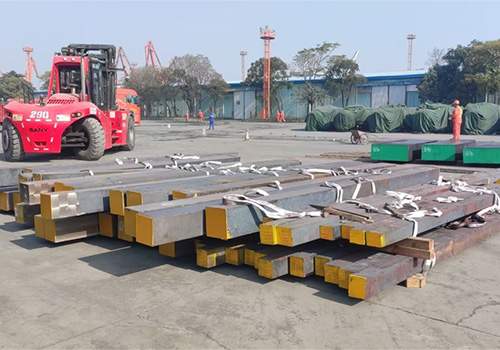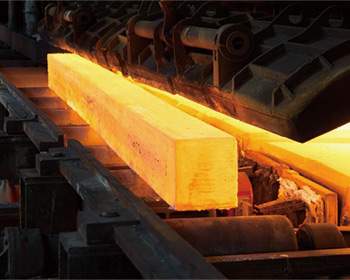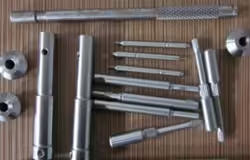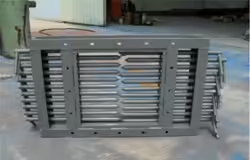
Square Bar Steel Guide: Properties and Applications
Introduction
Square bar steel is a versatile and essential material used across multiple industries for its strength, durability, and adaptability. From construction to manufacturing, square bar steel has become a staple due to its ability to be fabricated into a variety of products and structures. In this guide, we will explore the properties of square bar steel, its applications in different industries, and how its composition impacts its performance. We will also examine how to choose the right square bar steel for your specific project and provide insights into its key benefits.
What is Square Bar Steel?

Square bar steel refers to a solid piece of steel that has a square cross-section. It is commonly produced in hot-rolled or cold-rolled processes, depending on the intended application. The square shape offers uniformity, which makes it easier to work with and integrate into various structural designs. Square bar steel comes in different sizes and grades, each providing specific properties suitable for different industries and uses.
The term “square bar steel” encompasses a variety of steel types, including low-carbon, medium-carbon, and alloy steels. Each type provides unique properties such as hardness, corrosion resistance, and tensile strength, which can be adapted for specific project needs.
Key Properties of Square Bar Steel
The properties of square bar steel vary depending on the specific type of steel used and its processing methods. However, certain characteristics are common across most square bar steels, making it an ideal material for a wide range of applications.
Tensile Strength
Tensile strength is one of the most critical properties of square bar steel. It determines how much force the steel can endure before it fractures or fails. The tensile strength of square bar steel depends on its carbon content and alloying elements. For example, higher-carbon square bar steel tends to have greater tensile strength, making it suitable for load-bearing applications.
Hardness
The hardness of square bar steel influences its resistance to wear and abrasion. Depending on the heat treatment and composition of the steel, square bars can be produced to have varying levels of hardness. Hardness is especially important in industrial applications where the material will be exposed to mechanical wear, such as in manufacturing machines and tooling.
Ductility
Ductility refers to the ability of square bar steel to stretch or deform without breaking. This property is crucial in applications where the steel needs to be bent or shaped during fabrication. Square bar steel with high ductility can absorb stress without cracking, which is useful in structures that may be subject to dynamic forces.
Corrosion Resistance
While plain carbon square bar steel does not inherently offer high corrosion resistance, various coatings or alloying elements such as chromium can improve its ability to withstand corrosive environments. In outdoor applications or marine environments, choosing a square bar steel with added corrosion protection is essential for long-lasting performance.
Machinability
Square bar steel is known for its excellent machinability, especially in lower-carbon grades. The uniform shape makes it easy to cut, weld, and form into different components. This property is vital for industries that require precision-machined parts, such as the automotive or construction sectors.
Applications of Square Bar Steel
Square bar steel is utilized in numerous industries due to its versatility and customizable properties. Below are some of the most common applications:
Construction Industry
Square bar steel is widely used in construction due to its strength and structural integrity. It is often employed for the framework of buildings, bridges, and other infrastructure projects. The uniform shape allows it to be used as support beams, railings, and braces, making it an essential material for construction projects of all sizes.
Manufacturing and Machinery
In manufacturing, square bar steel is used to create machine components, tools, and equipment. The steel’s durability and hardness make it ideal for applications where the material will be exposed to constant mechanical stress and abrasion. Square bar steel is also used in the production of industrial machinery, such as conveyor systems and gears.
Automotive Industry
The automotive sector uses square bar steel for various parts such as axles, chassis, and frames. Its strength and machinability make it a good fit for manufacturing critical vehicle components that require high durability and precision. Square bar steel is often heat-treated to improve its performance in high-stress automotive applications.
Oil and Gas Industry
Square bar steel is used extensively in the oil and gas industry for drilling equipment, pipelines, and structural components in rigs. The steel’s ability to withstand harsh environmental conditions and resist corrosion, especially when alloyed with elements like molybdenum, makes it a popular choice in this industry.
Agriculture and Fencing
Square steel is commonly used in agriculture for fencing, gates, and support structures. Its strength and resistance to deformation make it suitable for outdoor environments where durability is essential. Additionally, square bar steel is used in farm equipment, such as tractor components and irrigation systems.
Table of Square Bar Steel Properties
To help better understand the properties of square steel, the table below provides a breakdown of the most common grades and their respective characteristics:
| Grade | Tensile Strength (MPa) | Hardness (Rockwell) | Corrosion Resistance | Ductility | Applications |
|---|---|---|---|---|---|
| Low-Carbon Steel | 400 – 550 | 50 – 70 HRB | Low | High | Construction, general fabrication |
| Medium-Carbon Steel | 550 – 700 | 70 – 90 HRB | Moderate | Medium | Automotive, machinery |
| Alloy Steel | 800 – 1200 | 90 – 120 HRB | High | Medium | Oil & gas, heavy machinery |
| Stainless Steel | 500 – 700 | 60 – 80 HRB | Very High | High | Marine, outdoor structures |
Benefits of Square Bar Steel

Square steel offers several advantages that make it a preferred material in various industries. Below are some of the key benefits:
Strength and Durability
One of the primary benefits of square steel is its strength, which allows it to withstand significant loads and mechanical stress. This makes it ideal for construction and industrial applications where long-term durability is essential.
Versatility
Square steel is available in various grades, sizes, and finishes, making it suitable for a wide range of uses. Whether it’s needed for light structural support or heavy machinery components, square bar steel can be adapted to meet specific project requirements.
Cost-Effectiveness
Compared to other materials, square bar steel offers a good balance of cost and performance. Its relatively low cost, combined with its strength and durability, makes it a cost-effective option for both small and large-scale projects.
Ease of Fabrication
The machinability and workability of square steel make it easy to cut, weld, and form into different shapes. This property reduces production time and allows for quicker project turnaround in industries such as construction and manufacturing.
Conclusion
Square bar steel is a reliable and versatile material used in a variety of industries, from construction to automotive manufacturing. Its properties, including strength, ductility, and machinability, make it ideal for numerous applications. Understanding the specific grade of square steel and how it performs under different conditions is crucial for selecting the right material for your project.
FAQ
What is the main advantage of square steel compared to round bar steel?
Square steel offers a more uniform cross-section, which makes it easier to work with in structural applications. It provides better surface contact in framework construction, whereas round bar steel is more commonly used for rotational components like shafts.
Can square steel be used in outdoor environments?
Yes, square steel can be used outdoors, especially when coated or alloyed with corrosion-resistant materials like chromium or galvanized finishes. Stainless steel square bars are particularly effective for outdoor or marine environments.
What are the most common sizes of square steel?
Square steel is available in various sizes, ranging from small dimensions of 10mm to larger bars of 200mm in width. The size selection depends on the intended application, with larger sizes often used in heavy-duty structural projects.
How does the chemical composition of square steel affect its performance?
The chemical composition of square steel directly impacts its strength, hardness, and corrosion resistance. For example, higher carbon content increases tensile strength, while the addition of alloying elements like chromium improves corrosion resistance.
Can square steel be welded easily?
Yes, square steel is generally easy to weld, especially lower-carbon grades. However, higher-carbon and alloy steel grades may require preheating or specialized welding techniques to prevent cracking and ensure strong joints.






